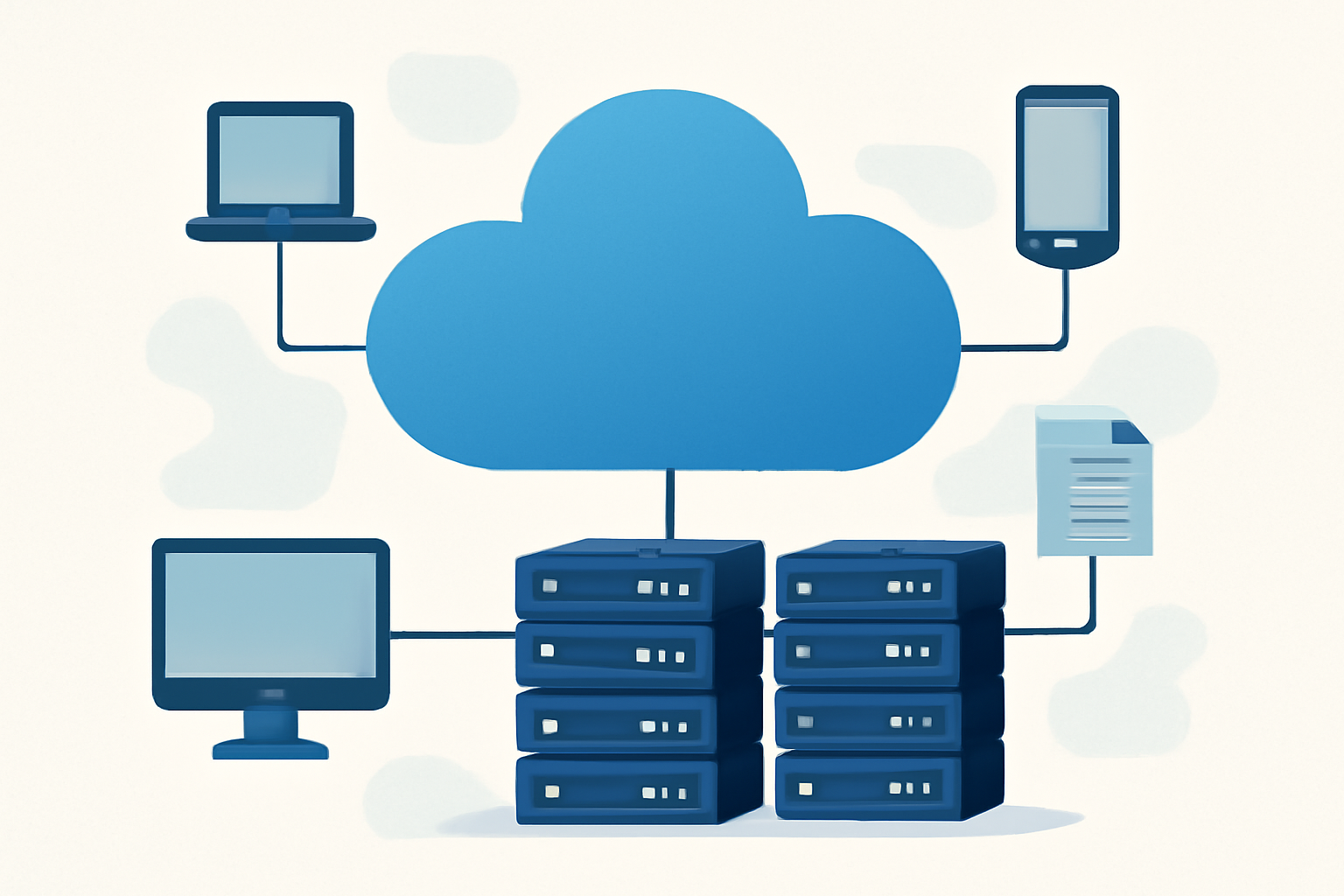Introduction
Cloud computing has become an essential part of the digital transformation of businesses and in people’s everyday lives. It allows access to data, systems, and applications from anywhere, at any time, using only an internet connection.
In this article, you will understand what cloud computing is, how it works, its main types, advantages, challenges, and trends for the upcoming years.
1. What is Cloud Computing?
Cloud computing is a model that allows remote access to IT resources such as servers, storage, databases, networks, software, and analytics via the internet.
Instead of investing in their own infrastructure, users and companies can hire cloud services, paying only for what they use.
2. How Does Cloud Computing Work?
Cloud computing works based on:
- Data Centers: Large processing centers spread across the world.
- Virtualization: Creates virtual environments that simulate physical servers.
- Network: Fast and secure connections ensure access to cloud resources.
- Scalability: Allows increasing or reducing resources as needed.
Information is stored and processed in remote servers, accessible via the internet, with high availability and security.
3. Types of Cloud Computing
- Public Cloud:
Provided by companies such as AWS, Google Cloud, Azure.
Shared among several users and businesses.
Reduced cost and high scalability. - Private Cloud:
Dedicated infrastructure for a single organization.
Greater control and security.
Can be hosted internally or by third parties. - Hybrid Cloud:
Combines public and private cloud.
Provides flexibility, keeping sensitive data in the private cloud and less critical operations in the public cloud. - Multicloud:
Using multiple cloud providers simultaneously.
Reduces risks and increases resilience.
4. Cloud Service Models
- SaaS (Software as a Service):
Software accessible via the web.
Examples: Google Workspace, Office 365, Netflix, Canva. - PaaS (Platform as a Service):
Platform for app development and hosting.
Examples: Google App Engine, Heroku, Microsoft Azure App Services. - IaaS (Infrastructure as a Service):
Infrastructure for servers, networks, and storage on-demand.
Examples: Amazon AWS EC2, Google Compute Engine, Microsoft Azure.
5. Benefits of Cloud Computing
- Scalability:
Increase or reduce resources quickly.
Ideal for seasonal businesses. - Cost Reduction:
Eliminates investments in physical hardware.
Pay-as-you-go model. - Security:
Encryption, automatic backups, access control.
Robust security protocols. - Remote Access:
Access from any device with internet.
Supports remote and hybrid work models. - Constant Updates:
Software and systems are always up to date.
Automatic bug fixes and patches. - Sustainability:
Optimizes energy resources.
Reduces carbon footprint.
6. Disadvantages and Challenges of Cloud Computing
- Dependence on the Internet:
Without a connection, access is interrupted. - Security Risks:
Cyberattacks remain a target, despite protections. - Compliance and Regulations:
Some companies must ensure data is in specific locations due to laws like LGPD and GDPR. - Portability:
Difficulty in migration between providers (vendor lock-in).
7. Applications of Cloud Computing in Everyday Life and Businesses
- Businesses:
Data management and backups.
Website and e-commerce hosting.
Big data analytics.
Collaboration tools (Drive, Dropbox, Teams). - Common Users:
Photo and video storage (Google Photos, iCloud, OneDrive).
Music and video streaming (Spotify, Netflix, YouTube).
Cloud gaming (Xbox Cloud Gaming, NVIDIA GeForce Now).
Emails and online documents (Gmail, Google Docs).
8. Future Trends of Cloud Computing
- Edge Computing:
Processing closer to the user, reducing latency. - Serverless Computing:
Runs code without the need to manage servers.
Reduces costs and simplifies development. - AI and Machine Learning in the Cloud:
Processing large data volumes.
Creating predictive models and generative AI. - More Security and Compliance:
Advanced encryption.
Solutions specific to compliance with laws like LGPD. - Mass Adoption of Multicloud and Hybrid Clouds:
Reducing dependence on a single provider.
Greater resilience and security.
9. Leading Cloud Providers in the Market
- Amazon Web Services (AWS): Global leader.
- Microsoft Azure: Strong integration with businesses and Office 365.
- Google Cloud Platform (GCP): Focus on AI, Big Data, and analytics.
- Oracle Cloud, IBM Cloud, Alibaba Cloud: Robust alternatives.
